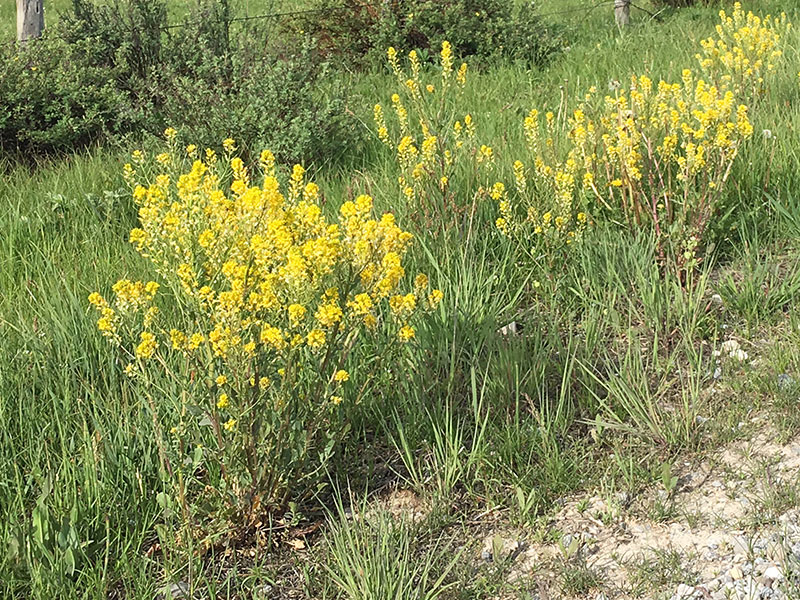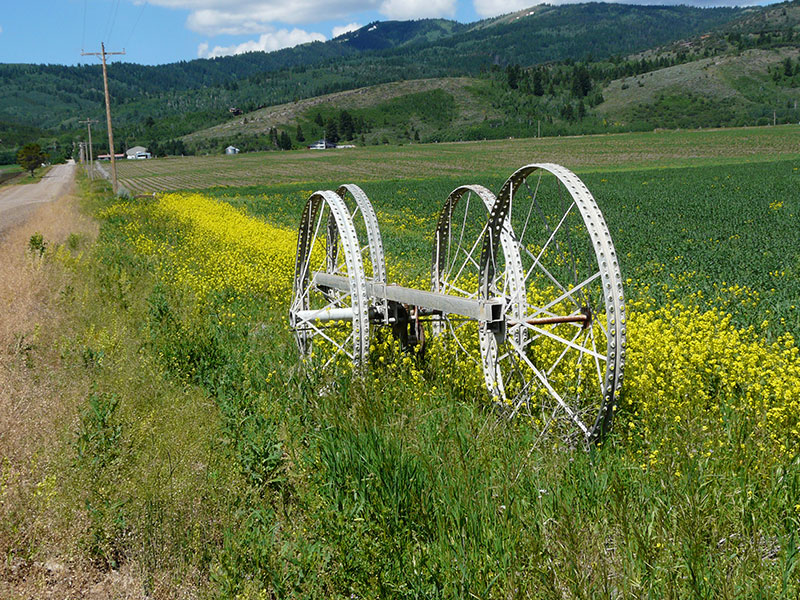Barbarea vulgaris / yellow rocket
- showy yellow brassica with relatively large flowers
- leaves deeply lobed with larger terminal lobe, smaller toward top of stems
- common on roadsides and waste places in spring
- siliques about an inch long and curving upward, with beaks and pedicels
Also known as: garden yellow rocket, cress, winter cress, yellow rocketcress
I have to start by saying that I really wanted this to be B. orthorceras, also known as yellow rocket. It looks almost identical, but is native and with a somewhat restricted distribution both globally and by habitat. That makes it more interesting than anything called “vulgaris”, especially a non-native. But in the end, I had to finally admit it wasn’t. So…
[This] yellow rocket is a biennial, forming a rosette of leaves in the first year which are probably unidentifiable, and bolting, flowering and seeding in the second year. The plant form is erect and up to 30 inches tall. The stems are green, sometimes with red “hints”, and branch near the top.
The leaves of yellow rocket are of two sorts. The basal leaves are long and lobed with 1 to 4 pairs of side lobes and a significantly larger and rounded terminal lobe. Stem leaves are basically the same but with fewer lobes, and the leaves get smaller toward the top of the stem. The stem leaves also lack petioles and clasp the stem. The clasping bits are called auricles and they have pointy tips and rounded ears. Unlike B. orthoceras, the ears aren’t hairy and the lobes are broader than you could call “pinnate”. These leaves are visible in some of the gallery photos.
The flowers of yellow rocket are, of course, yellow. And despite what I have said nastily about the plant, in bloom they are quite showy and make roadsides really pretty. Still, they look like pretty much any other yellow brassica, but are a bit larger. They aren’t much use, really, in identifying to species. On the other hand, the fruits are. In this case they are siliques, that either spread to the side or curve upward, but not so far that you could call them appressed (neither are the oppressed). Each silique has a short pedicel at the base, and a short “beak” at the top. The beaks remain until the siliques burst open and scatter the seeds.
Yellow rocket can be found lots of places… waste places, ditches, roadsides, fields, gardens. It has a distinct tendency to be invasive.
| Color | |
|---|---|
| Family | |
| Blossom size | |
| Inflorescence size | |
| Inflorescence type | |
| When? | |
| Where? |



